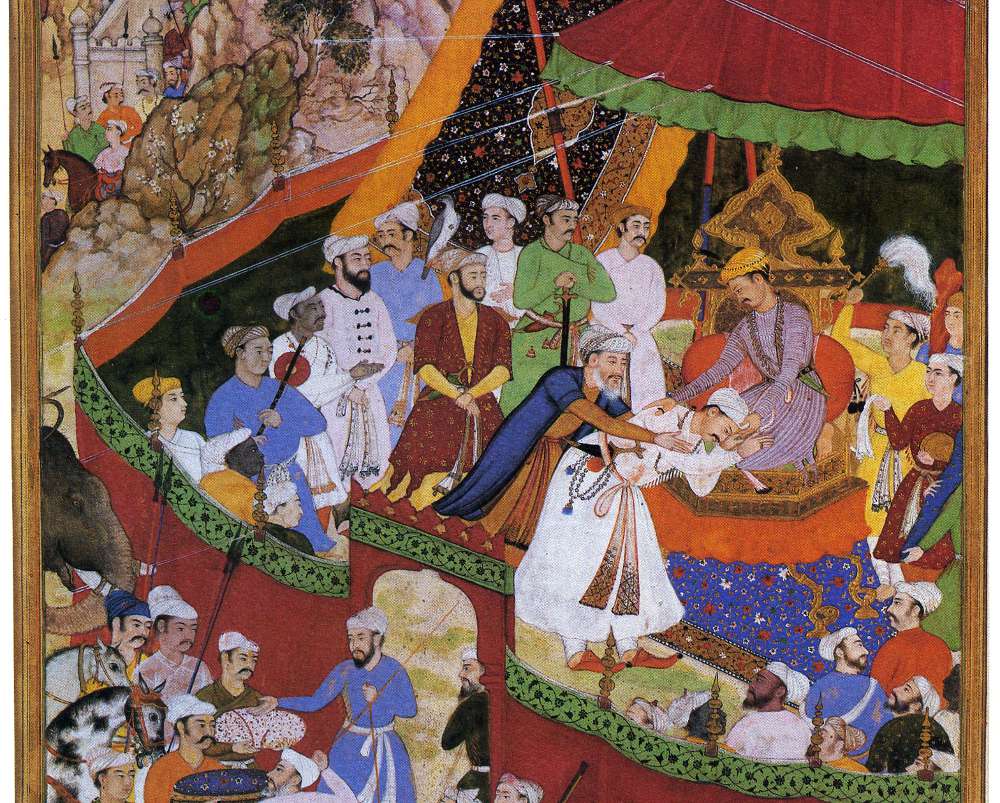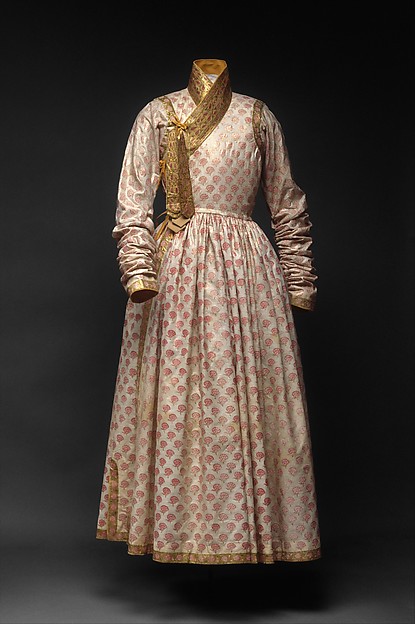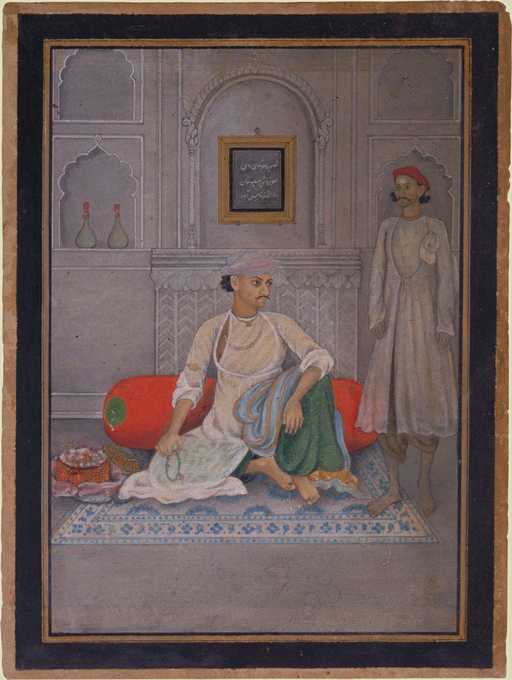FWP:
SETS == EXCLAMATION; IDIOMS
CHAK-E GAREBAN: {17,9}
CLOTHING/NAKEDNESS: {3,5}
MADNESS: {14,3}
ROAD: {10,12}
For background see S. R. Faruqi's choices. For more on Ghalib's unpublished verses, see the discussion in {4,8x}.
Structurally speaking, this verse resembles {84,4x}.
The punchiness of the verse comes from a play on the Persian idiom jaamah qabaa kardan . As is his wont, Ghalib has used the idiom in both its colloquial sense ('I would tear the robe of existence into tiny bits like road-dust!') and its literal meaning ('I would make the tied-robe of existence into an open-robe that would be as uncontrollable as road-dust!'). And also as usual in mushairah verses, he withholds the punch-word till the last possible moment.
S. R. Faruqi, commenting on the verse (Sept. 2008), emphasized the nature of the jaamah as a robe that is lapped across the chest and held in place by small ties. Here's an unusually elegant example (1600's, Deccan) from the Met's collection:
By contrast, the qabaa is a kind of coat; it is fully open and can hang loose. In this painting from the Akbar-namah (*Routes*), one important courtier close to Akbar wears a dark blue qabaa , and another just behind him wears a dark red one-- while the neighboring courtier in green wears a jaamah , as do most of the others in the scene:

Underneath the jaamah , as a lower garment there would be either wide or tight pajamas; the latter were the kind of chuu;Rii-daar paa))e-jaamah that most of us know. This usage emphasizes the versatility and generalizability of jamah as a broad synonym for 'garment'. Women wore jamahs of various kinds as well; modern kathak dancers, both male and female, wear costumes directly derived from this Mughal courtly tradition.
Ghalib seems to use the word only for masculine garments. Mir sometimes dresses the beloved in a jaamah , as in this particularly erotic example: M{1815,2}.
In Faruqi's view, 'like the dust of the road' refers to life as something ubiquitous and amorphous and ungraspable, so that the 'garment of existence' becomes something you can no more tie up and bind securely than you can so treat the 'dust of the road'.
Thus to turn the multiply-tied jaamah of existence into a loose, open qabaa of existence is to loosen one's grip on life, as a madman or wildly passionate lover would do. And the most convenient way to do this is surely to simply rip the jaamah open, so that it hangs loose like a qabaa . Here there are of course overtones of the archetypal mad-lover act of chaak-e garebaa;N , the 'tearing of the collar'; for more on this, see {17,9}.
Then the (Persianized) idiomatic sense of qabaa karnaa , as the commentators note, is 'to tear' (see the Steingass definition above). The robe of existence would be ripped into pieces as small and futile as the grains of dust in the road-- and the road would be the one on which the Sufistic traveler steadily advances as he loosens his grip on this limited and bounded world. Faruqi also notes (Apr. 2015) the sense of jaamah-e hastii qabaa karnaa ('to tear away the robe of existence') as 'to die'.
While we're on the subject of clothing, there's also the angarkhaa , though Ghalib never dresses anybody in one. But here's an example from *the Met's collection*. In the painting below, 'Lala Bhagwandas, Perfume Merchant and Banker of Shahjahanabad' (opaque watercolor, Delhi, c.1820), the Lala and his servant both seem to be wearing angarkhas, though the Lala's is much lighter:


Asi:
That wildness is very fine, by means of which, or because of which, I would be able to make my madness a manifestation of oblivion; and the way that the dust of the road has torn the robe of existence, in the same way I too would make the robe of existence into threads.
== Asi, p. 161